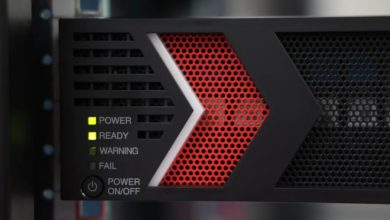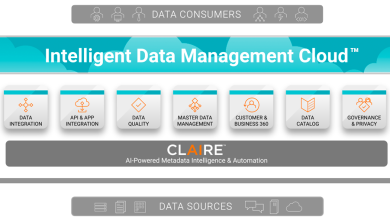
Organisations need a full arsenal to combat cyber threats effectively, and a crucial component of this arsenal is its ability to leverage Artificial Intelligence (AI) technologies. AI can help with semi-automating various parts of cybersecurity solutions, such as threat correlation analysis, sifting through metadata, analyzing raw, siloed data, and others. It is one of the key elements of a robust, adaptable security infrastructure that can effectively safeguard your network.
The biggest reason AI is now at the core of cybersecurity is its unparalleled capability to digest massive amounts of data. This capability, when combined with specific algorithms, can help AI detect unknown malware and viruses, recognise malicious patterns and perceive even the most imperceptible behavioural changes that may suggest unprecedented and new attacks. This is why AI – led by rapid advancements made in Machine Learning (ML) —is a game-changer. But that’s not all AI can do. It can also:
- Automatically implement the best course of action in case of an attack.
- Recommend and implement effective prevention strategies for all attacks.
- Model user behaviour to spot anomalies or suspicious activities and automatically disable the users involved.
- Remediate AI-powered attacks.
- Keep pace with all the new ways malicious actors carry out attacks.
Leveraging the encompassing power of AI is even more critical today given the rise of Advanced Persistent Threat (APT) attacks. An APT attack is a kind of sophisticated cyber attack where a malicious actor establishes a concealed but sustained presence within a network. The purpose of an APT attack is to breach or steal sensitive data over an extended period of time.

APT attacks are highly targeted, and carefully designed to hit a specific organisation via a multi-stage process, which we can map using the “cyber attack kill chain” (a process that plots out an attack into its various stages). Every stage in this process involves different behaviours and attack tools that are constantly being modified to keep them from being static—and, therefore, not detectable using signature-based detection. This sophistication allows APT attacks to “fly under the radar” and avoid most traditional security strategies.
This is the reason AI is no longer a luxury in cybersecurity but a necessity. It is, therefore, best that you incorporate it into your security architecture as soon as possible—something IT and security are now doing. And you can do so too by deploying Hillstone’s AI-driven security solutions that involve a variety of technologies working together to:
- Secure critical servers.
- Interpret cyber incidents and automate decision-making.
- Detect and mitigate in-progress breaches wherever they are happening.
- Prevent known and unknown cyber attacks.
Click HERE to see how Hillstone’s AI-driven security solutions work.
These technologies are best of breed, evidence of which are the awards and accolades Hillstone has received. Most notably, Gartner named Hillstone’s Server Breach Detection System (sBDS), an AI-powered Network Detection and Response (NDR) solution, as a representative solution in its Market Guide for Network Detection and Response.
Hillstone’s sBDS uses the powerful combination of AI and ML to detect sophisticated multilayer, multi-stage threats that specifically target critical servers and hosts—and mitigate their impact. Its technologies are anchored on the cyber kill-chain and MITRE ATT&CK frameworks, with server protection solutions that work in tandem with Hillstone’s highly advanced next-generation firewalls to effectively block all threats.
Specifically, Hillstone sBDS provides:
- Comprehensive web server security. With abnormal behaviour detection, advanced threat detection and deception technology capabilities, Hillstone sBDS can readily identify threats to critical servers, along with web and application threats.
- Full visibility. Hillstone sBDS “sees” ongoing Indicators of Compromise (IoCs) spanning a broad range of threat types and catalogues threat sources and compromised systems effectively through traffic monitoring and traffic pattern mapping. It can also recognise and then block vectors of compromise using built-in forensic capabilities.
- High efficacy but low false positives. Leveraging modern correlation analytics spanning different IoCs, Hillstone sBDS is able to detect and mitigate real threats—but without setting off false positives that tend to overwhelm SecOps teams.
- Seamless integration with Hillstone Suite. Hillstone offers a comprehensive suite of security solutions, and these can be used alongside Hillstone sBDS—further enhancing already robust security. It can, for instance, leverage Hillstone’s NGFW configurations to block future attacks or tie in with CloudView and Hillstone HSM for centralised management.
Hillstone’s AI-driven technologies shine because they work across the entirety of all relevant phases—attack detection, analysis and response—and Hillstone sBDS is the perfect example. And in this day and age of increasingly sophisticated cyber threats, that is precisely the kind of cybersecurity solution your organisation will need.
Click HERE to learn more about Hillstone’s sBDS and how it can help improve your organisation’s threat detection and breach prevention capabilities using AI.





